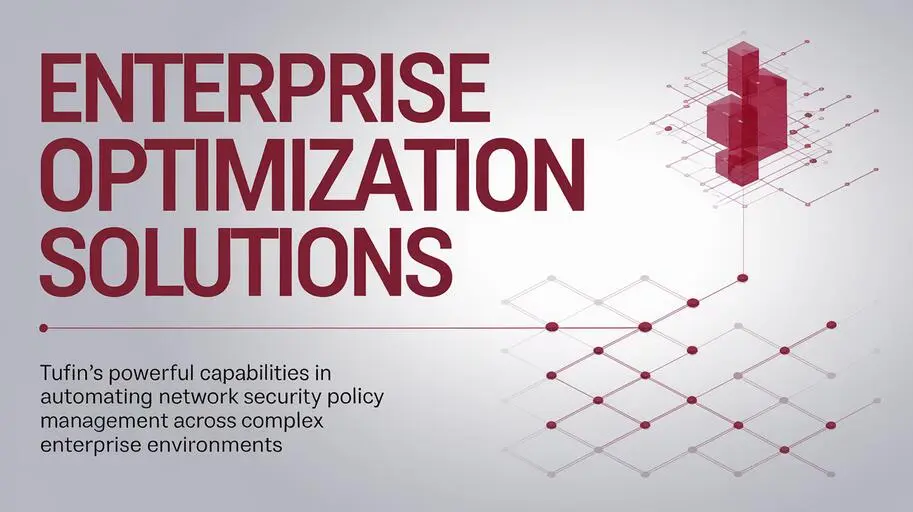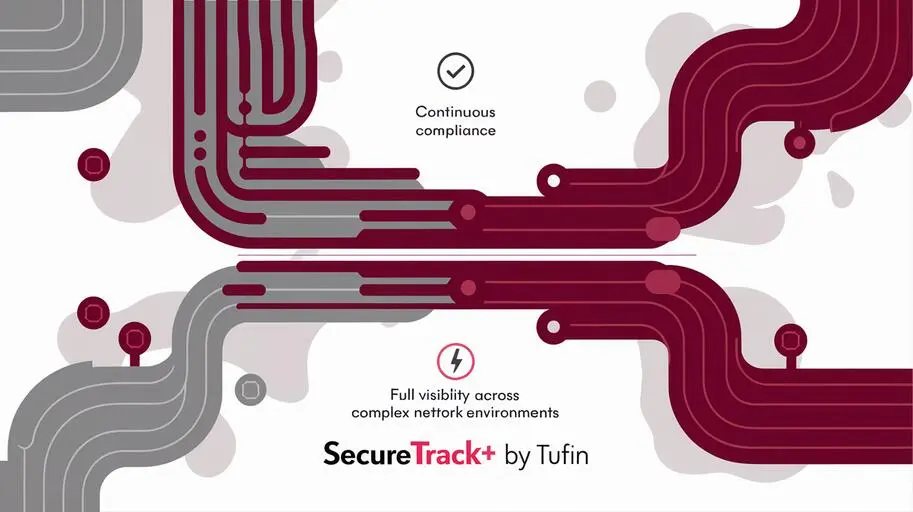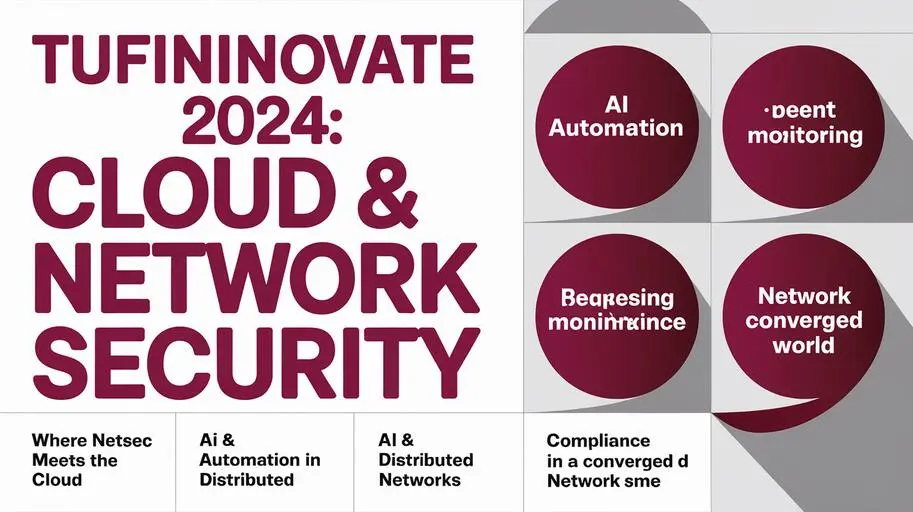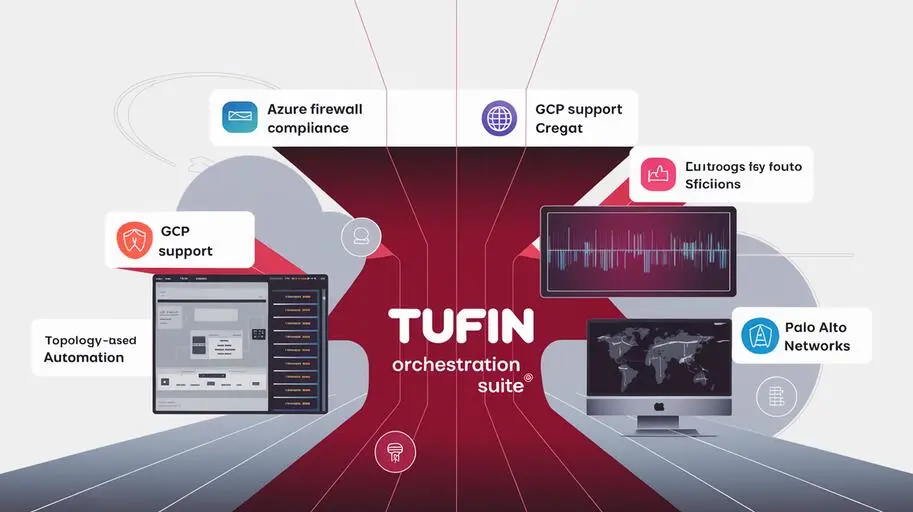
In today’s rapidly evolving digital landscape, where cyber threats are becoming increasingly sophisticated and regulatory requirements are becoming ever more stringent, ensuring regulatory compliance is a significant challenge for organizations. Manual processes, disparate tools, and lack of transparency lead to errors, security gaps, penalties, and reputational risks that can result in substantial financial losses and erode customer trust. There is a platform that automates vital processes, centrally manages security policies, and ensures compliance with industry standards. This is Tufin, a network security automation platform that enables organizations to effectively manage security policies, ensure network security, and comply with complex regulatory requirements through automation, centralization, and visualization.
Why is Security Compliance Critical?
In modern business, regulatory compliance is not just a formality but a critical factor for survival and success. Failure to comply with standards such as PCI DSS (for e-commerce platforms), GDPR (for companies dealing with personal data of EU users), HIPAA, and NIST can lead to severe consequences, including hefty fines, lawsuits, loss of customer trust, and reputational damage. Additionally, organizations that do not comply with security requirements become more vulnerable to cyberattacks, which can lead to the loss of confidential data, financial losses, and operational disruptions.
Security Standards You Need to Know:
- PCI DSS: Payment Card Industry Data Security Standard, establishing requirements for protecting cardholder data, primarily for companies involved in e-commerce.
- GDPR: General Data Protection Regulation, regulating the processing of personal data of EU citizens and applying to companies that handle such data.
- HIPAA: Health Insurance Portability and Accountability Act, setting requirements for protecting medical information.
- NIST Cybersecurity Framework: National Institute of Standards and Technology, developing cybersecurity standards and recommendations for organizations of all types.
Tufin: A Comprehensive Platform for Security Automation and Compliance
Tufin provides a comprehensive solution for security automation and simplified security policy management. It allows organizations to centrally manage security policies, automate Security Policy Change Management processes, conduct security audits, and ensure continuous compliance with security requirements. Centralized management covers a wide range of devices, including firewalls, routers, and switches from various vendors.
Key Features of Tufin:
- Centralized Management: Tufin SecureTrack provides a single console for managing all security policies, regardless of device type or network location.
- Automated Analysis: Tufin automatically analyzes security device configurations, identifies risks, and provides vulnerability analysis.
- Security Policy Change Management: Tufin SecureChange automates change workflows, ensuring compliance and reducing the risk of errors.
- Audit and Reporting: Tufin provides detailed reports on security audits and compliance with security requirements.
- Integration: Tufin integrates with a wide range of security devices (e.g., Check Point, Cisco, Fortinet, AWS, Azure, GCP) and ITSM systems (e.g., ServiceNow, Remedy, Jira Service Management), providing comprehensive network protection.
How Tufin Helps Ensure Regulatory Compliance
Tufin provides a range of features and capabilities that help organizations ensure regulatory compliance:
- Centralized Security Policy Management: Tufin SecureTrack provides centralized management of security policies across all network devices, including firewalls, routers, and switches. This allows organizations to easily control and enforce security policies.
- Automated Risk and Vulnerability Analysis: Tufin automatically analyzes security device configurations and identifies potential risks and vulnerabilities. This helps organizations identify and address security issues before they can be exploited by attackers. The vulnerability analysis conducted by Tufin provides detailed information about weaknesses in the security infrastructure. Various Tufin tools are used for this, including configuration analysis tools and tools for detecting deviations from specified policies.
- Change Workflow Automation: Tufin SecureChange automates the process of making changes to security device configurations, ensuring compliance and reducing the risk of errors. Change workflows automated with Tufin ensure that all changes are approved and documented, going through specific stages of approval and authorization.
- Audit and Reporting: Tufin provides detailed security audit and compliance reports that help organizations demonstrate compliance with regulatory requirements. These reports include information about security policies, device configurations, and identified vulnerabilities.
- Integration with SIEM and Other Systems: Tufin integrates with SIEM systems (e.g., Splunk, QRadar, Sentinel) and other security solutions, providing comprehensive network protection. Integration with SIEM allows organizations to collect and analyze security data from all network devices, as well as automatically respond to security incidents.
Tufin for Compliance with Specific Standards
Tufin provides specialized features and capabilities to assist organizations in complying with PCI DSS, GDPR, HIPAA, and NIST:
- PCI DSS: Tufin helps comply with PCI DSS requirements 1 & 4 (firewall and other network component configuration requirements) by automatically checking configurations, identifying insecure rules, and recommending fixes. Tufin SecureTrack allows you to track changes to firewall rules, providing audit and compliance with PCI DSS requirement 11.4 (regular scanning for unauthorized access to cardholder data).
- GDPR: Tufin helps comply with GDPR requirements by providing data flow visualization and identifying potential risks associated with the storage and processing of personal data. SecureApp allows you to identify which applications have access to personal data and control this access according to the principle of least privilege.
- HIPAA: Tufin helps comply with HIPAA requirements by providing access control to protected health information (PHI) and monitoring user activity. SecureChange automates the process of making changes to security policies, ensuring that all changes are approved and documented, which complies with HIPAA audit and reporting requirements.
- NIST: Tufin helps organizations implement cybersecurity best practices recommended by the NIST Cybersecurity Framework by automating compliance assessment, identifying security gaps, and providing recommendations for remediation. Tufin allows organizations to evaluate their security in accordance with the NIST CSF and develop a plan to improve their security.

Technical Details of Implementing Compliance with Tufin
Let’s consider some technical aspects of implementing compliance with Tufin. The Tufin architecture consists of several key components: SecureTrack, SecureChange, and SecureApp. SecureTrack provides monitoring and analysis of security policies, SecureChange automates change workflows, and SecureApp manages application security policies. SecureTrack collects information about security device configurations using SSH, API, and SNMP protocols and presents it in a single management console.
Configuring Tufin for Compliance
Proper Tufin configuration is critical to ensuring compliance with standards. It is important to configure security policies in Tufin in accordance with the requirements of specific standards, such as PCI DSS or GDPR. This may include defining rules for data access, data encryption, and monitoring user activity. For example, you can create a rule that blocks access to PCI DSS data from unauthorized networks.
API and Automation Capabilities
Tufin provides a powerful API that allows organizations to automate many tasks related to security policy management and compliance. The API allows you to integrate Tufin with other systems, such as SIEM systems and vulnerability management systems. This allows organizations to create a comprehensive network protection system that automatically responds to security threats and ensures compliance. The API supports various programming languages, including Python and Java, and allows you to perform various types of requests, such as retrieving information about security policies, making changes to device configurations, and generating compliance reports. For example, you can use a Python script to automatically create firewall rules based on data from the incident management system.
Tufin: A Solution for Security in the Cloud
With the growing popularity of cloud computing, Tufin provides Cloud Security Posture Management (CSPM) solutions that help organizations ensure network security and compliance in cloud environments such as AWS, Azure, and GCP. Tufin integrates with cloud services such as AWS Security Groups, Azure Network Security Groups, and GCP Firewall Rules. Tufin allows organizations to centrally manage security policies in the cloud, identify vulnerabilities, and automate change processes. For example, Tufin can be used to identify misconfigured S3 buckets, unprotected virtual machines, and so on.
Integration with ITSM
Integrating Tufin with ITSM systems, such as ServiceNow, allows you to automate the process of requesting changes to security policies. For example, when a request is received to open a port for a specific application, Tufin automatically checks whether this change complies with security policies and provides recommendations for its implementation. After the request is approved, Tufin automatically makes changes to the corresponding security devices.
Benefits of Security Automation with Tufin
Choosing Tufin as a security automation solution provides organizations with a number of significant benefits, including reduced audit time, fewer security incidents, and more effective security policy management.
Conclusion
Tufin provides a comprehensive solution for security automation and compliance. The platform significantly simplifies security policy management processes, reduces the risk of human error, and helps organizations stay within regulatory requirements. This allows organizations to focus on their core business without worrying about security and compliance issues.
Implementing Tufin is a strategic decision that allows organizations to effectively address complex network risk and security management challenges.
Request a Tufin demo to learn how our platform can help you ensure compliance and improve your network security.
FAQs on the topic of: Security Compliance with Tufin
-
Why is security compliance so important for business?
Security compliance is critical for the survival and success of a business, as non-compliance can lead to huge fines, lawsuits, loss of customer trust, reputational damage, and increased vulnerability to cyberattacks.
-
What are the main security standards to know?
The main security standards to be aware of include PCI DSS (for protecting cardholder data), GDPR (for protecting the personal data of EU citizens), HIPAA (for protecting medical information), and NIST (cybersecurity standards and recommendations).
-
What is Tufin and how does it help ensure security and compliance?
Tufin is a network security automation platform that allows organizations to centrally manage security policies, automate change processes, conduct security audits, and ensure continuous security compliance.
-
What are the main features offered by Tufin?
Tufin's main features include centralized security policy management, automated risk and vulnerability analysis, change workflow automation, auditing and reporting, and integration with a wide range of security devices and ITSM systems.
-
How does Tufin provide centralized security policy management?
Tufin provides a single console for managing all security policies, regardless of the device type or network location, making it easy to control and enforce these policies.
-
How does Tufin automate risk and vulnerability analysis?
Tufin automatically analyzes security device configurations, identifies risks and vulnerabilities, providing detailed information on weaknesses in the security infrastructure.
-
How does Tufin help to comply with PCI DSS?
Tufin helps organizations comply with PCI DSS requirements by automating security policy management processes, conducting security audits, and generating compliance reports, for example, by automatically checking firewall configurations for PCI DSS compliance.
-
How does Tufin support GDPR compliance?
Tufin helps organizations comply with GDPR requirements by providing control over personal data, automating consent management processes, and generating compliance reports, helping to track where personal data is stored, who has access to it, and how it is used.
-
What technical components make up the Tufin architecture?
The Tufin architecture consists of several key components, including SecureTrack (for monitoring and analyzing security policies), SecureChange (for automating change workflows), and SecureApp (for managing application security policies).
-
What are the benefits of security automation with Tufin?
Security automation with Tufin provides a number of benefits, including reducing the cost of compliance and auditing, improving network security, improving security policy management efficiency, accelerating the change process, and improving visibility and control over network security.




